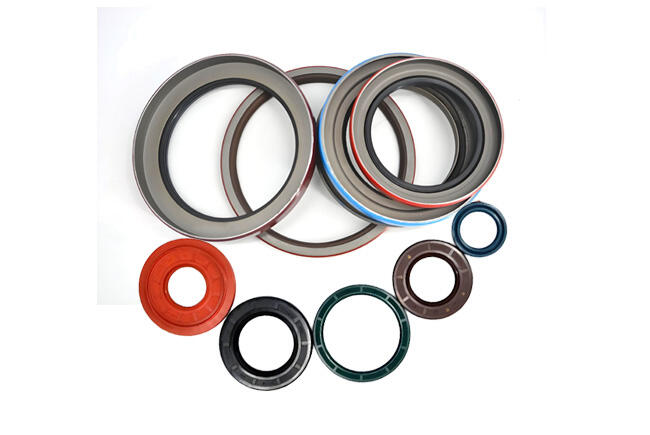In the powertrain of heavy-duty trucks, oil seals are small but essential components. Their role is to prevent lubricant leakage while keeping dust, water, and debris away from bearings and gearboxes. As trucks are increasingly used for long-distance and high-load operations, the performance requirements for oil seals have become more demanding.
Challenges in Heavy Truck Operations
Engines and transmissions in heavy trucks operate under continuous high loads. Oil seals must withstand high temperature, high pressure, and high-speed rotation. In cold climates, rubber hardens and loses elasticity, while in summer uphill driving, friction heat can soften and wear the sealing lip. Trucks also run on dusty or muddy roads, which requires seals with excellent wear resistance and reliable sealing performance.
Materials and Designs
NBR (nitrile rubber): Suitable for general conditions, good oil resistance but limited high-temperature capability.
FKM (fluoroelastomer): Performs well in high temperature and harsh environments, often used in crankshafts and turbochargers.
PTFE (polytetrafluoroethylene): Low friction and strong wear resistance, ideal for high-speed rotating parts.
Metal-cased seals: Provide structural strength and stability under pressure.

Installation and Maintenance Notes
Inspect the shaft surface before installation to avoid scratches that may cause leakage.
Apply grease evenly on the sealing lip to reduce initial wear.
Avoid eccentric installation to prevent uneven stress on the lip.
Regularly check seal condition and replace promptly if leakage is detected.
Choosing oil seals for heavy trucks is not about a single formula. The key lies in understanding the operating conditions and combining the right materials, designs, and services. Those who achieve this will secure reliability and trust in the demanding world of heavy-duty transportation.
 Hot News
Hot News